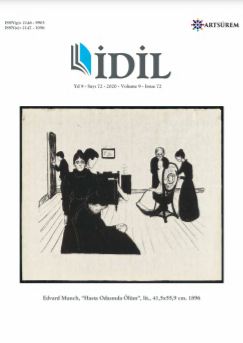ÇAĞDAŞ TÜRK RESMİNDE MELEZLEŞME
HYBRIDIZATION IN CONTEMPORARY TURKISH PAINTING
Author(s): Hüseyin Elmas, Ali Rıza KanaçSubject(s): Fine Arts / Performing Arts, Visual Arts, Recent History (1900 till today), History of Art
Published by: Sanat ve Dil Araştırmaları Enstitüsü
Keywords: Hybridization; Painting Art; Plastic;
Summary/Abstract: The word "hybrid" comes from the Latin "hibrida" root and is used to mean something confused. This can be called a new species, which is formed by combining two different species. Although the word hybrid is used more in the field of biology, it has found a place in many fields with new meanings over time. It is possible to say that the word hybrid also has a place in the art of painting. Because this should be the most appropriate definition for the conclusion reached by arranging different materials pictorially on a surface. Under the influence of changing social orders in the modern age, artists questioned their works and their identity and experienced a profound change in the plastic sense. It is possible to show the collages added to the painting surface, which started with Cubism in the early 20th century, as the earliest examples of hybridization. Later on, Dadaism and Pop-Art found it on the painting surface by using it for purposes other than pure forms of ready-made objects and created a hybridization in the context of homogeneous-heterogeneous mixtures. Although these approaches, other than traditional plastic values, created a great sensation at the time of their emergence, they are highly adopted today. Although we saw the first examples of hybridization in Western painters since the beginning of the 20th century, many Turkish painters also adopted this method in their works.
Journal: İdil Sanat ve Dil Dergisi
- Issue Year: 9/2020
- Issue No: 72
- Page Range: 1231-1245
- Page Count: 15
- Language: Turkish

